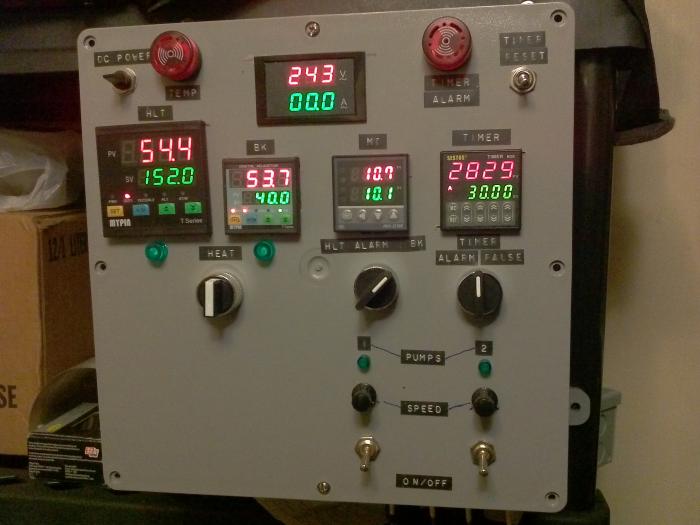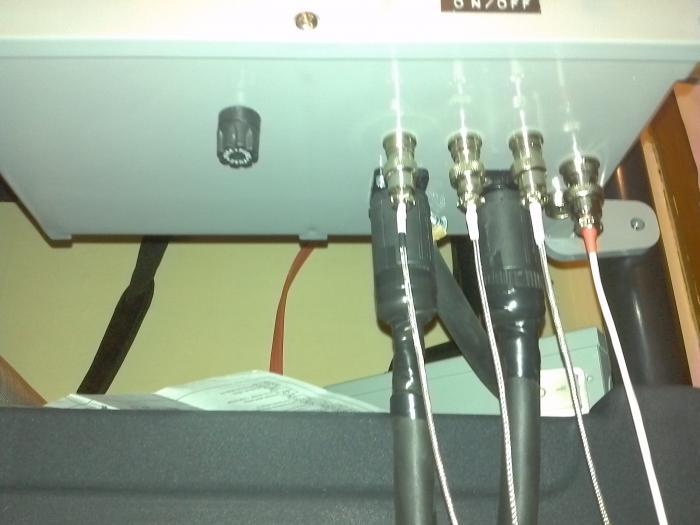modernlifeisANDY
Well-Known Member
Hello all - I come seeking some advice.
I am a brewer on a budget, but one that still wants to make some upgrades to his system. I am in the process of designing and putting together a two vessel, one pump hybrid RIMS system. The plan is for two stainless steel kegs - MT and BK. The MT will be hooked up to a RIMS tube with a 1500 element - enough to maintain mash temperatures. I'll likely use the propane-fired BK to heat the majority of my water volumes and my pump to transfer between vessels.
I plan on alternating the system between no-sparge volumes using my MT, RIMS, and pump, and batch sparging using a bucket as a holding tank for the sparge water.
Herein lies my dilemma - building my control panel for the RIMS system. I plan on mounting all of the electrical components in a metal toolbox, similar to this one. I want to try and straddle the line between "flashy" and "functional" for my control box elements, but I don't want to break the bank. At a bare minimum, I want to run an Auber PID and temperature controller, have a full power on switch, a switch and indicator light for the pump, a switch and indicator light for the element, and some sort of emergency stop. I really like the illuminated push-button switches used in many builds here, but I'd like a cheaper solution - but not as bare-bones as a light switch. I'd like SOME flash.
Is a kit like this one the best bang for the buck? What are the bare minimum internal components I would need to run what I plan to?
I know this is a catchall question, but I'm clueless when it comes to electricity - that's why my electrician friend is going to help with the heavy duty stuff - I just want to make the beer machine work.
Thanks everyone.
I am a brewer on a budget, but one that still wants to make some upgrades to his system. I am in the process of designing and putting together a two vessel, one pump hybrid RIMS system. The plan is for two stainless steel kegs - MT and BK. The MT will be hooked up to a RIMS tube with a 1500 element - enough to maintain mash temperatures. I'll likely use the propane-fired BK to heat the majority of my water volumes and my pump to transfer between vessels.
I plan on alternating the system between no-sparge volumes using my MT, RIMS, and pump, and batch sparging using a bucket as a holding tank for the sparge water.
Herein lies my dilemma - building my control panel for the RIMS system. I plan on mounting all of the electrical components in a metal toolbox, similar to this one. I want to try and straddle the line between "flashy" and "functional" for my control box elements, but I don't want to break the bank. At a bare minimum, I want to run an Auber PID and temperature controller, have a full power on switch, a switch and indicator light for the pump, a switch and indicator light for the element, and some sort of emergency stop. I really like the illuminated push-button switches used in many builds here, but I'd like a cheaper solution - but not as bare-bones as a light switch. I'd like SOME flash.
Is a kit like this one the best bang for the buck? What are the bare minimum internal components I would need to run what I plan to?
I know this is a catchall question, but I'm clueless when it comes to electricity - that's why my electrician friend is going to help with the heavy duty stuff - I just want to make the beer machine work.
Thanks everyone.
Last edited by a moderator:







